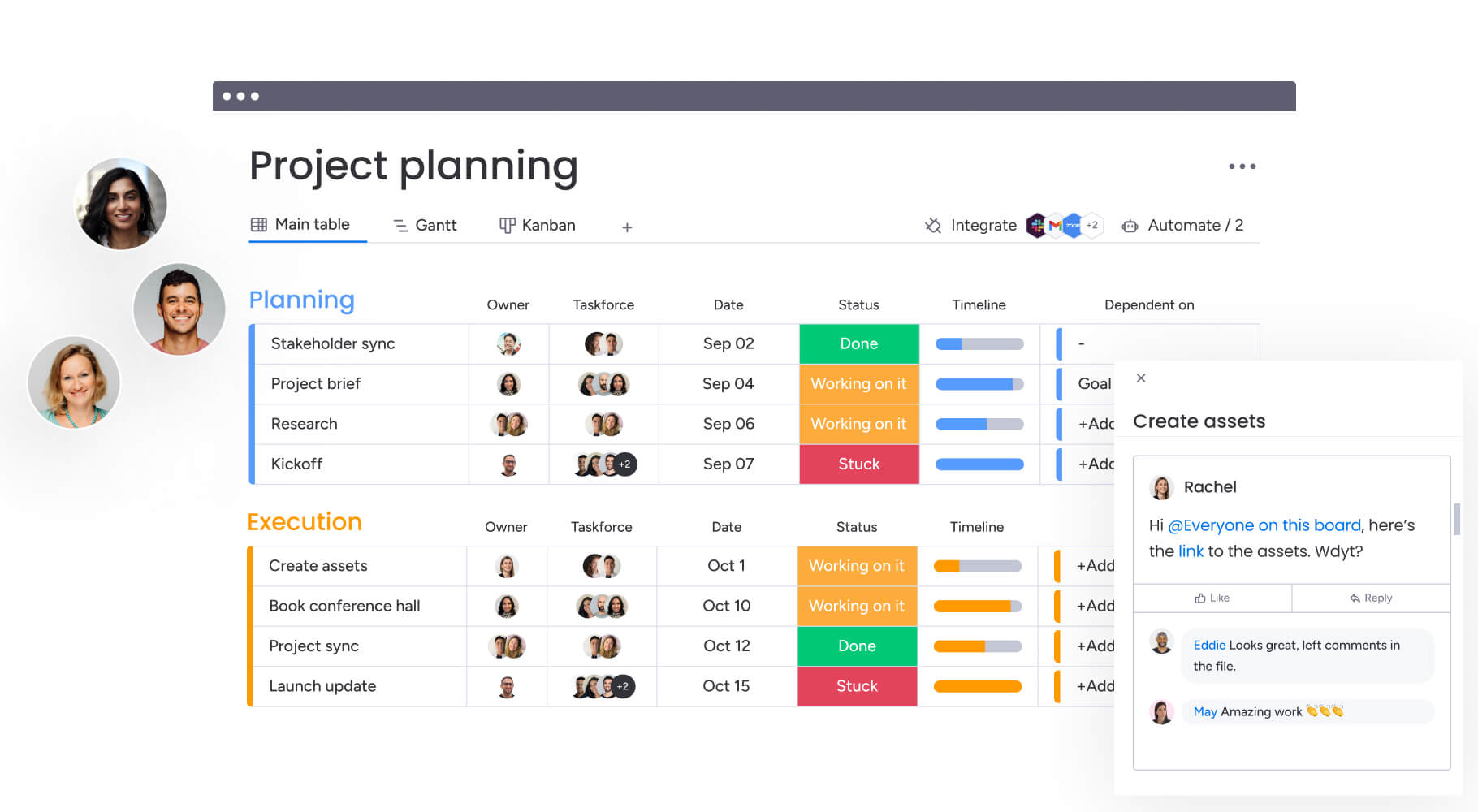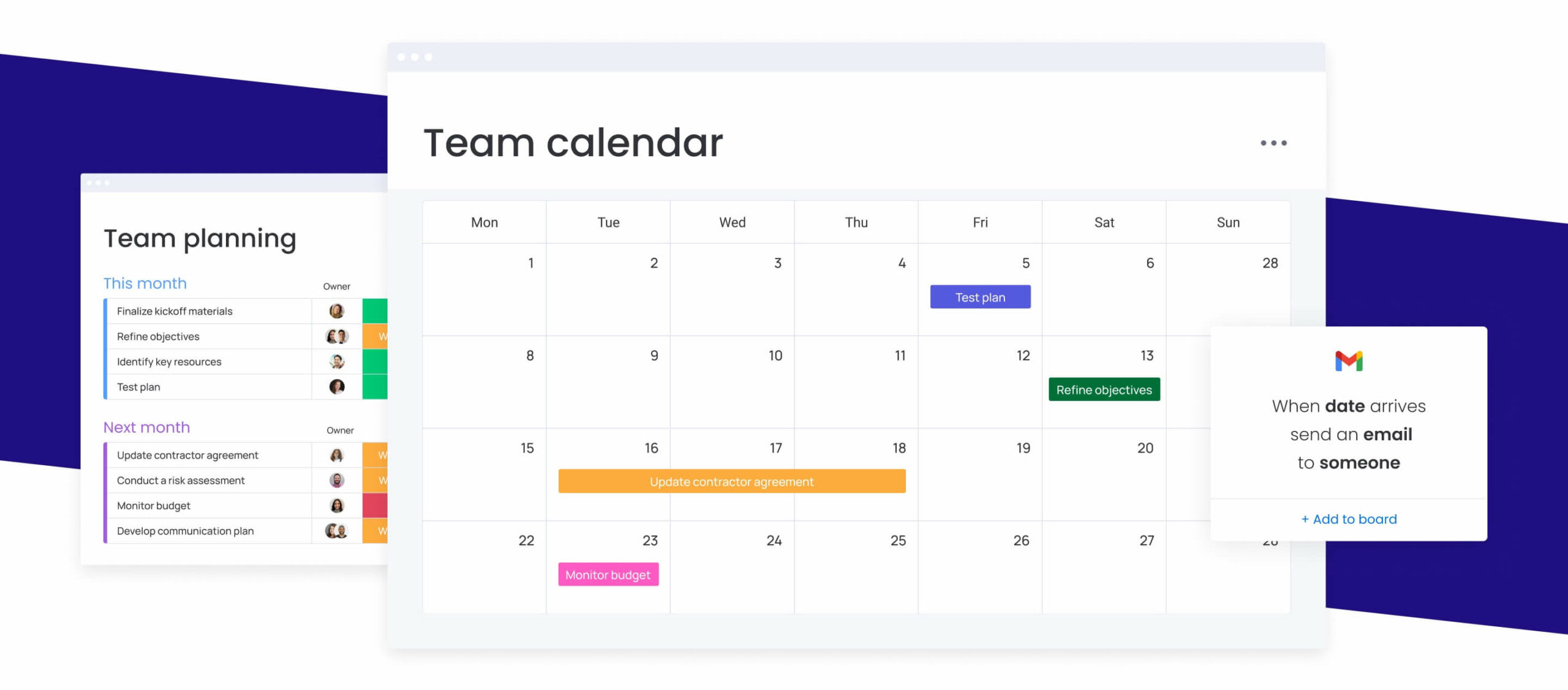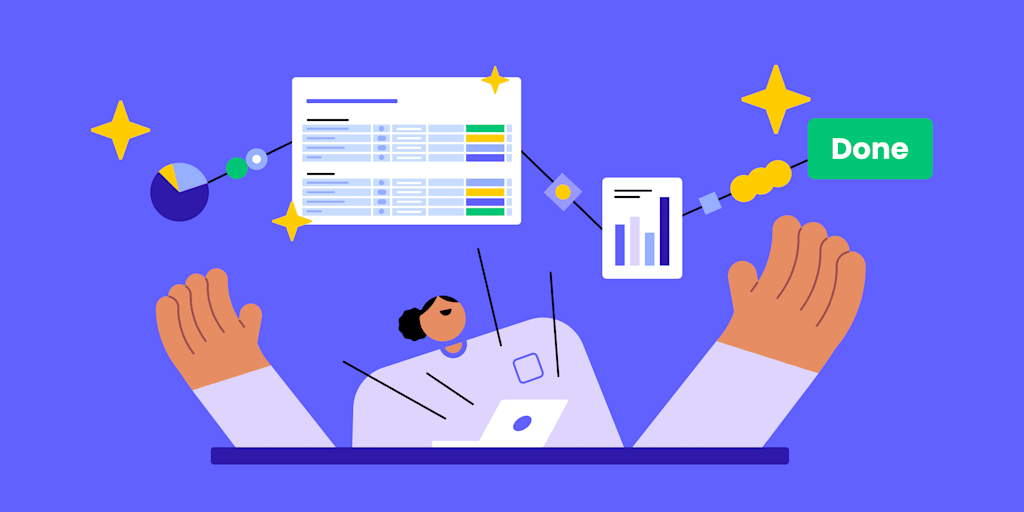Every project ends with a moment where you stop, look back, and ask the question that really matters: Did this actually work the way we hoped it would?
That moment is your post-implementation review: it’s the bridge between wrapping up one project and starting the next with more clarity, better habits, and fewer surprises.
A good PIR gives you more than a tidy summary. It helps your team understand what drove success, where friction slowed things down, and which decisions shaped the final outcome. When done consistently, it becomes one of the most valuable habits in your project life cycle, turning day-to-day experience into long-term improvements.
Whether you are closing out a major rollout or reviewing a small internal initiative, a structured PIR helps your team learn faster, plan smarter, and deliver stronger results the next time around.
If you want to build a repeatable, effective PIR process, keep reading — the steps and examples below will help you get started.
Key takeaways
-
Strengthen future projects: use PIR insights to repeat successful patterns and avoid familiar pitfalls.
-
Stay accountable: review how well objectives, timelines, and budgets aligned with actual results.
-
Give every stakeholder a voice: gather clear, honest feedback to understand the full impact of the project.
-
Turn insights into action: document lessons and assign follow-ups so improvements become part of your workflow.
-
Streamline the entire process: monday work management helps teams run structured PIRs, track recommendations, and keep improvements visible across future projects.

What is a post-implementation review (PIR)?
A post-implementation review is a structured look at how well a completed project delivered on its goals. It sits at the end of the project life cycle and gives your team a chance to understand the real impact of the work — not just what was planned, but what actually happened.
Instead of being a formality at the finish line, a PIR acts as a learning checkpoint. It helps teams turn experience into insight and insight into better decisions for the next project.
A strong PIR usually digs into questions like:
-
Were the project’s objectives achieved: and to what extent?
-
How the work was delivered: including whether timelines, budgets, and resources aligned with expectations.
-
What supported or blocked progress: such as communication patterns, stakeholder alignment, or unexpected risks.
-
What teams would repeat or change: to improve efficiency, collaboration, and outcomes next time.
The timing also matters. A PIR is most effective when:
-
The project has delivered its core purpose: so outcomes and results are measurable.
-
Team experiences are still fresh: making feedback more accurate and specific.
-
Early adoption challenges have surfaced: such as resistance to change, technical issues, or process gaps.
Practical benefits of a well-run post-implementation review
A post-implementation review delivers value far beyond a simple project recap. When teams take the time to reflect with structure and honesty, the insights they uncover can shape how future projects are planned, coordinated, and delivered. A well-run PIR helps organizations learn faster and work more intentionally.
Here are some of the benefits teams typically see:
-
Stronger decision-making: reviewing actual outcomes gives teams clearer data to guide budgets, timelines, and resource allocation on future projects.
-
Better cross-team alignment: capturing different perspectives helps teams understand where communication worked smoothly and where coordination needs refining.
-
Fewer repeated mistakes: surfacing root causes makes it easier to address consistent blockers, whether they’re process gaps, unclear requirements, or workflow bottlenecks.
-
Clearer expectations for future projects: teams build a more realistic understanding of what they can deliver within specific timeframes and constraints.
-
Improved stakeholder confidence: documenting results and sharing insights provides transparency, which helps leaders understand the project’s impact and the value delivered.

Who should be involved in a post-implementation review?
A successful PIR brings together the people who can speak directly to how the project worked in practice. Involving a mix of perspectives helps you capture a complete picture of what supported progress and where challenges surfaced.
Most PIRs include:
-
The project lead: to provide overall context on goals, scope, timelines, and key decisions.
-
Core team members: the people who worked hands-on and can share insight into day-to-day execution.
-
Stakeholders from affected departments: such as operations, finance, IT, or customer-facing teams who experienced the impact of the project.
-
An impartial facilitator: someone who wasn’t directly involved, helping guide the conversation and keep feedback balanced.
-
Sponsors or senior leaders (when relevant): to review strategic outcomes, not tactical details.
The goal is to gather contributors who can offer honest, experience-based feedback. The right mix creates a well-rounded review that leads to more accurate insights and stronger follow-up actions.
Key components of a successful PIR report
A strong PIR report turns observations into clear, practical guidance that teams can use long after a project closes. The goal is to capture insights in a format that’s easy to reference, easy to share, and easy to act on.
Executive summary
This section gives stakeholders a quick overview of the project’s purpose, top findings, and the most important recommendations. It’s written for anyone who needs the highlights without reviewing the full report.
Performance overview
Here you outline how the project’s actual results compared to the original plan. Instead of restating objectives, focus on measurable outcomes such as delivery timelines, budget accuracy, resource usage, and quality standards.
Stakeholder perspectives
A PIR report should summarize themes from the feedback collected across teams. Rather than quoting individuals, highlight patterns in what people experienced, including areas where expectations were met and where friction appeared.
Lessons learned
This section turns raw feedback and data into meaningful insights. It explains why certain results occurred, what conditions contributed to success, and which factors limited progress. The focus is on understanding causes, not listing problems.
Recommendations for future projects
The PIR report should close with clear, actionable guidance. Each recommendation should outline what needs to change, who should own it, and how it supports stronger project execution going forward. This section connects the review to real improvement.

How to conduct a post-implementation review: 5 easy steps
Running a successful PIR involves more than just a meeting. Following a structured process ensures you gather the right information and turn it into meaningful change.
Here’s how to do it in five easy-to-follow steps:
Step 1: define the scope and objectives
Start by setting clear boundaries for the review. Confirm which parts of the project you’ll examine, which questions you want to answer, and which stakeholders need to be involved. A defined scope keeps discussions focused and ensures the review stays objective.
Step 2: gather project data and stakeholder feedback
Pull together the information that reflects how the project actually unfolded. This includes schedules, budget records, performance metrics, and any documents that tracked progress. Alongside the data, gather feedback from the people directly involved through surveys, short interviews, or a structured meeting.
Step 3: analyze the findings to identify insights
With everything assembled, review the findings to identify patterns and themes. Look for moments where plans aligned with outcomes, as well as areas where expectations shifted. The goal is to understand what influenced the project’s trajectory, not just what went right or wrong.
Step 4: document the PIR report and lessons learned
Consolidate your analysis into the structured PIR report outlined earlier. Document the lessons learned in a clear and concise way. The focus should be on constructive insights, not on assigning blame. This document will serve as a valuable resource for future project teams.
Step 5: share insights and create actionable follow-ups
Translate your analysis into a structured report that highlights the most important insights. Use the core components outlined earlier to keep the document clear and consistent. This report becomes your team’s reference point for future planning and should focus on practical, evidence-based conclusions.

Best practices for an effective PIR
A PIR delivers the most value when it’s approached with clarity, openness, and consistency. The goal isn’t to revisit every detail of the project — it’s to create the right environment for useful conversations and reliable insights. These best practices help teams get the most out of each review.
Create space for honest conversations
Teams share more meaningful feedback when they feel comfortable speaking openly. Set expectations early that the review is not about blame. It’s about understanding experiences and improving together.
Keep discussions grounded in facts
Opinions matter, but data adds clarity. Encourage teams to support their points with evidence such as timelines, metrics, or documented decisions. This helps separate individual impressions from project-wide patterns.
Include voices across the project
Different teams notice different challenges. Invite a balanced mix of contributors — not just senior stakeholders — so the review reflects the reality of day-to-day work as well as strategic outcomes.
Focus on themes, not isolated moments
Individual incidents can be misleading on their own. Look for trends that appeared throughout the project: recurring delays, consistent communication issues, or repeated moments of strong collaboration. Using communication plan templates can also really help here,
Document insights while they’re fresh
Memories fade quickly once a project wraps. Capture key points during the review rather than waiting until later. This keeps the report accurate and prevents important details from being lost.
Turn reflections into clear next steps
A PIR is only useful if it leads to action. Assign owners, set timelines, and define what success looks like. Each improvement should connect directly to what you uncovered in the review.
These practices help teams approach PIRs with purpose, ensuring each review feels constructive, fair, and genuinely useful for the projects still ahead.
Run your entire PIR process on monday work management
A post-implementation review is much easier to manage when every part of the process lives in one place. monday work management gives teams the structure to collect project data, organize feedback, and turn insights into action without switching tools or losing information along the way.
You can begin by setting up a dedicated board for your review. This keeps project details — timelines, budgets, deliverables, and any supporting documents — in a single, searchable workspace. Custom fields help you track the exact criteria you want to evaluate, making comparisons more consistent.
To gather input from contributors, you can:
-
Create a Form for team members and stakeholders to share feedback
-
Have submissions flow automatically to the board so nothing gets missed
-
Use the AI Assistant to group similar comments and surface repeated themes
Dashboards add another layer of clarity by visualizing how the project performed against the original plan. You can track delivery progress, identify where resources shifted, and spot trends that influenced the final outcome — all before you start writing the PIR report.
When it’s time to act on your recommendations, assign owners, set deadlines, and automate simple reminders. This keeps follow-up visible and makes sure improvements carry into your next project rather than getting lost once the review ends.
If you want a clearer, faster, and more organized way to run PIRs, monday work management brings every step of the process together so your team can learn and improve with confidence.
Frequently asked questions
What is the difference between a post-implementation review and a project post-mortem?
While similar, they have different focuses. A post-implementation review (PIR) is a standard process for all projects, successful or not, designed to capture lessons learned for future improvement. A project post-mortem is typically conducted for failed or troubled projects to understand what went wrong and avoid similar failures.
Who should lead the post-implementation review?
The PIR should be led by an impartial facilitator who was not directly involved in the project's execution. This is often a project manager from another department, a member of a Project Management Office (PMO), or an external consultant. This ensures objectivity and encourages honest feedback from the team.
How soon after a project should a PIR be conducted?
It's best to conduct the PIR shortly after the project is completed, typically within 2-4 weeks. This ensures that the project details are still fresh in the minds of the team members. However, it should be late enough that the initial impact and outcomes of the project can be measured.
What key metrics should be included in a PIR?
A PIR should include a mix of quantitative and qualitative metrics, such as: budget variance (planned vs. actual cost), schedule variance (planned vs. actual timeline), scope adherence (did the project deliver what was promised?), quality of deliverables, and stakeholder or customer satisfaction scores.
Is a PIR only for failed projects?
Absolutely not. A PIR is just as important, if not more so, for successful projects. Analyzing successes helps you understand what went right so you can replicate those conditions and processes in the future. It's a key tool for continuous improvement, regardless of the project's outcome.

